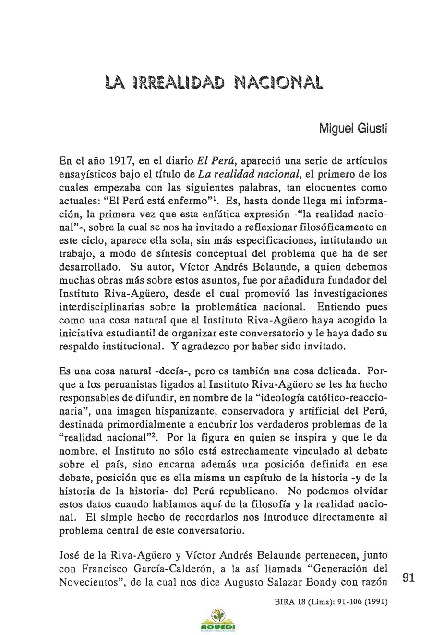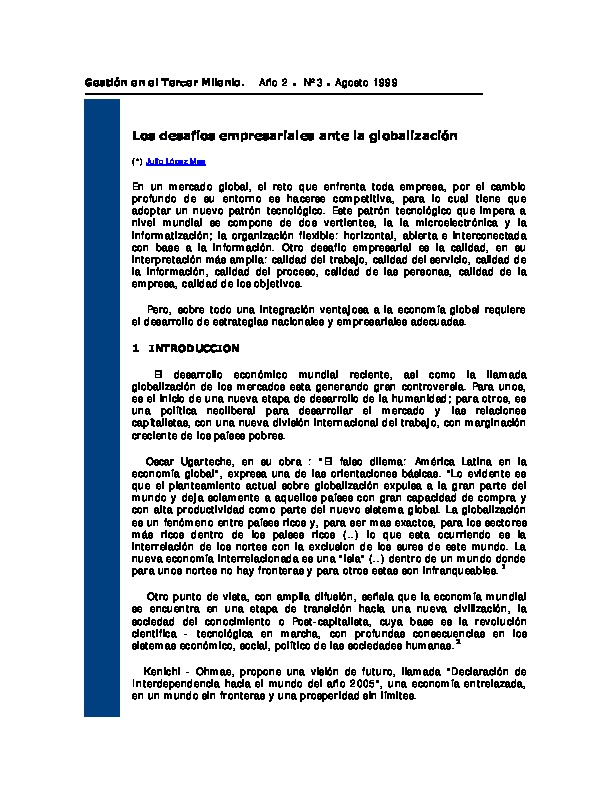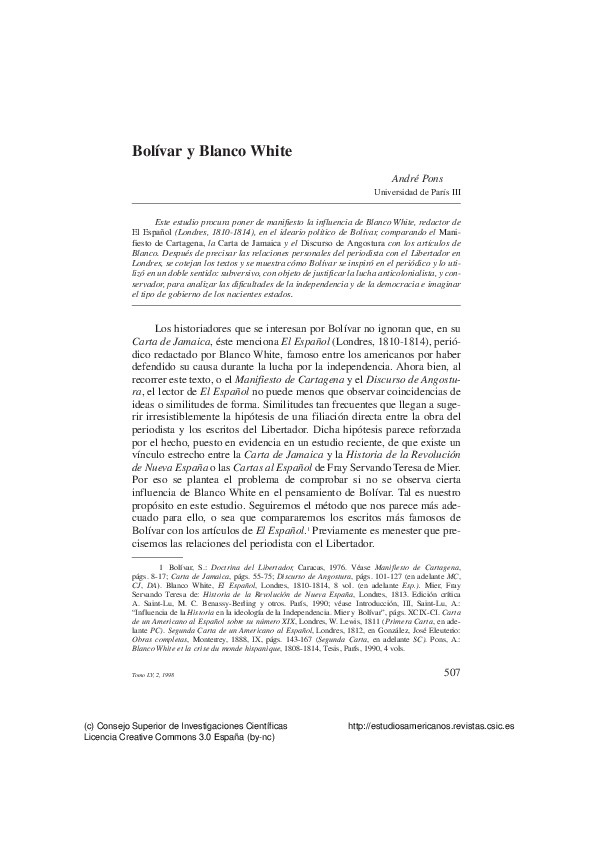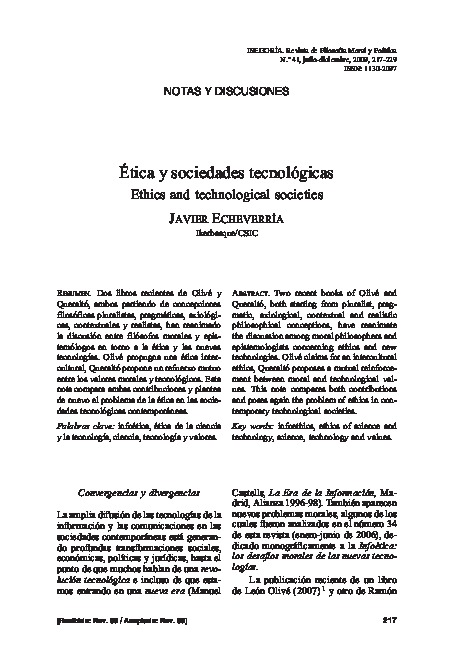Textos
Texto
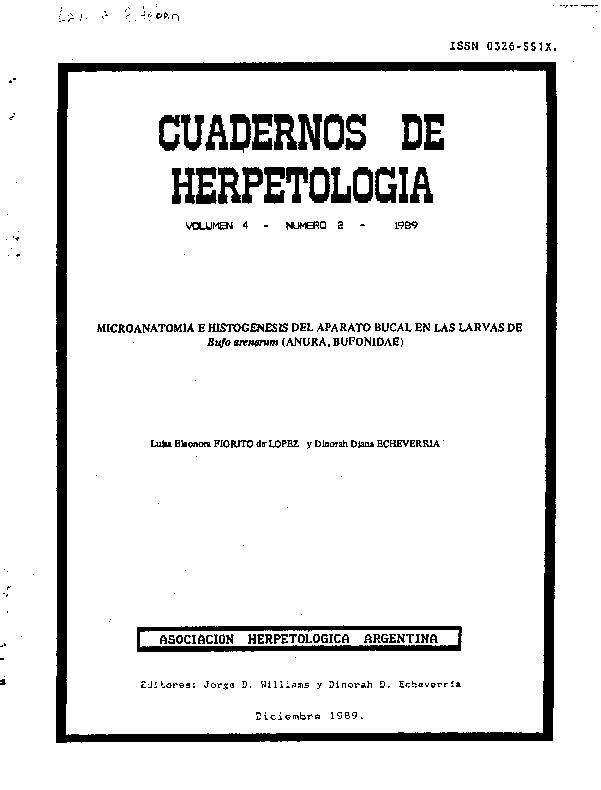
Microanatomía e histogénesis del aparato bucal en las larvas de Bufo arenarum (Anura: buffonidae)
Descripción
During the larval period of Bufo arenmum, the horny teeth of the oral apparatus are developed from column of cells. Each column of cells is composed of a few number of epithelial cells catefully arranged and placed perpendicularly either to the edge of the beak or to the labial ridge. The beak column shows: 3 to 4 discoidal cells; 2 to 3 preconic cells; a variable number of conic cells in differents stages of the keratinizition process;a variable number of kentinized cells (beak tooth). The labial ridge column shows: 1 spherical basal cell; 1 ovoidal cell; 1 odontoid (or dental) cell; 1 or 2 cells in different stage of keratinization procees; keratinized cells (labial tooth). There is another cell (attendant cell) that is placed beside each odontoid cells up to whole keratinization. This attendant cell gives stability to the tooth base (or horny sheath), before the tooth appeirs to the tip of the labial ridge. The columns are supported by the surrounding epithelial cells. The homy sheath gives protection to the first group of labial teeth; allow the change of the old tooth to the next one without affecting it; it also lodges the attendant cell. The histogenesis process begins in the beak at stage 21 and in the labial ridge at stage 22. The keratinization process begins in stage 23 in both structures of the oral apparatus.
Fiorito, L. & Echevarría, D. (1989). Microanatomía e histogénesis del aparato bucal en las larvas de Bufo arenarum (Anura: buffonidae). Cuadernos de Herpetología, 4 (2), pp. 4-10
Categorias:
Colecciones:
Recuerda
La cultura y la educación necesitan de tu apoyo activo.
Información del autor
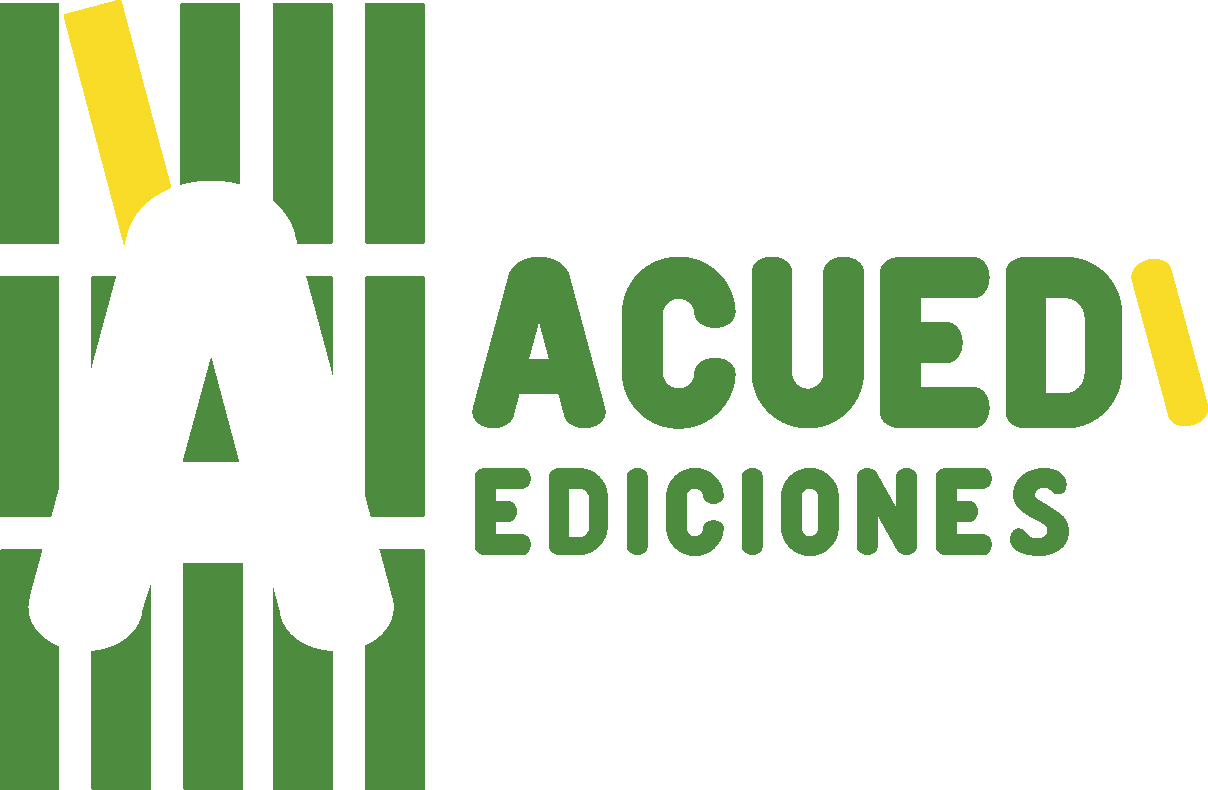
ACUEDI
ACUEDI son las siglas de la Asociación por la Cultura y Educación Digital. Somos una asociación civil sin fines de lucro, con sede en Lima (Perú), fundada en noviembre del 2011. Nuestro principal objetivo es incentivar la lectura y la investigación académica, especialmente dentro de espacios digitales. Para ello hemos diseñado una serie de proyectos, todos ellos relacionados entre sí. Este es nuestro proyecto principal, nuestra Biblioteca DIgital ACUEDI que tiene hasta el momento más de 12 mil textos de acceso gratuito. Como tenemos que financiar este proyecto de algún modo, ya que solo contamos con el apoyo constante y desinteresado de la Fundación M.J. Bustamante de la Fuente, hemos creado otros proyectos como ACUEDI Ediciones, donde publicamos libros impresos y digitales, y la Librería ACUEDI, donde vendemos libros nuestros y de editoriales amigas ya sea mediante redes sociales, mediante esta plataforma, en eventos o en ferias de libros.ACUEDI
